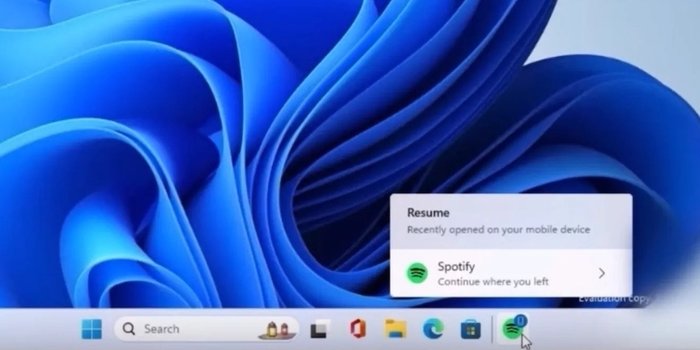In an era where our digital lives constantly hop between devices, the promise of true continuity has long been a holy grail for tech users. Microsoft, after years of cultivating its cross-device vision, is now taking a significant leap forward. Windows 11 is set to receive a groundbreaking feature that allows users to effortlessly transfer their ongoing Android application sessions directly to their desktop, a move that distinctly echoes Apple`s much-lauded Handoff functionality.
The “Handoff” Experience Explained
Imagine listening to music on Spotify on your Android phone during your commute. As you arrive at your desk, instead of fumbling to relaunch the app and find your place on your PC, Windows 11 could soon present a prompt, allowing you to pick up exactly where you left off, instantly. This isn`t merely about launching an app; it`s about transferring the state of the application, eliminating friction and saving precious seconds of your workflow. It`s an elegant solution to a common modern dilemma, designed to make our multi-device existence feel less like a juggling act and more like a fluid, continuous stream.
Microsoft`s Journey Towards Cross-Platform Harmony
For Redmond, this isn`t their first rodeo in the cross-device arena. Previous iterations like `Your Phone` (now `Phone Link`) have laid the groundwork, offering features like mirroring notifications, making calls, and accessing messages and photos from Android devices directly on Windows. However, `Phone Link` largely functions as a remote control and content streamer. This new `Handoff` capability represents a more profound integration, moving beyond mere mirroring to true session continuity. It`s a pragmatic admission that while their own mobile ambitions didn`t quite pan out, the future of Windows lies in embracing the ecosystems where users are – predominantly Android and iOS. One might even muse that it only took a few decades, but the vision of a truly interconnected digital experience is finally taking tangible form, regardless of whose logo is on the back of your phone.
The Android Conundrum and Its Potential Solutions
Integrating deeply with the Android ecosystem presents unique challenges compared to Apple`s tightly controlled hardware-software stack. Android, with its myriad manufacturers, custom skins, and varying versions, is a vast and sometimes unruly garden. The initial testing phase, reportedly limited to Spotify and a select group of Windows Insider Program participants, is a sensible approach. This allows Microsoft to refine the underlying technology before attempting to scale it across the broader, more fragmented Android landscape. The success of this feature will hinge on how effectively Microsoft can standardize this `handoff` experience across diverse Android devices and how many app developers choose to adopt the necessary integration.
What Lies Ahead: From Music to Multitasking
Starting with Spotify is logical, given its widespread use and the relatively straightforward nature of transferring media playback state. However, the true potential of this feature extends far beyond music. Imagine beginning to draft an email on your phone and seamlessly continuing it on Outlook on your PC, or navigating a complex web page in Chrome on Android and having it ready to go in Edge on Windows. The applications for productivity, creativity, and simple convenience are immense. While the full rollout and broader app support will undoubtedly take time, this initial step signals a clear direction: Windows 11 aims to be the central hub where all your digital threads converge, irrespective of their origin.
A Broader Vision for Seamless Computing
This commitment to fluidity isn`t isolated. Microsoft recently introduced a utility for Windows 11 facilitating seamless data transfer from one PC to another via local network, moving files, settings, and other critical data with ease. Taken together, these initiatives paint a picture of a Windows 11 designed from the ground up to be less of an isolated operating system and more of an intelligent, adaptive environment that understands and supports your workflow across all your devices. It’s an acknowledgment that the modern user rarely operates within the confines of a single machine.
The introduction of seamless Android app transfer to Windows 11 is more than just a new feature; it`s a strategic declaration. It signals Microsoft`s continued dedication to cross-platform compatibility and a user-centric approach that prioritizes convenience and productivity above platform exclusivity. While the journey from beta to universal adoption will likely involve its own set of technical hurdles, this development marks a significant milestone, bringing us closer to a truly interconnected digital future where our work and play truly flow, unimpeded, between our screens.







